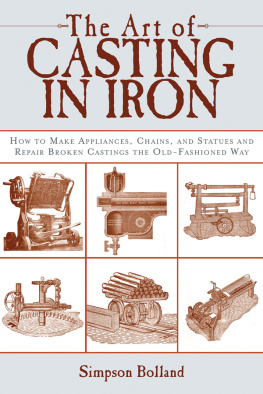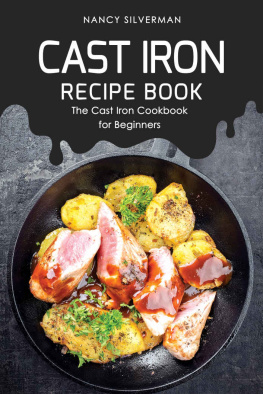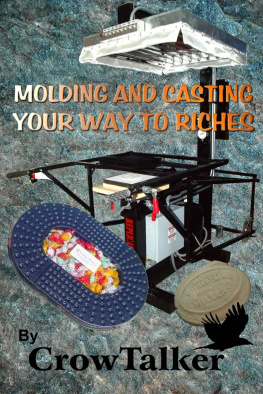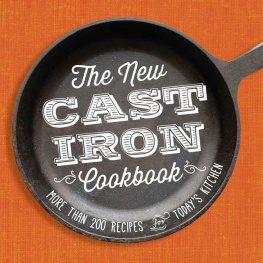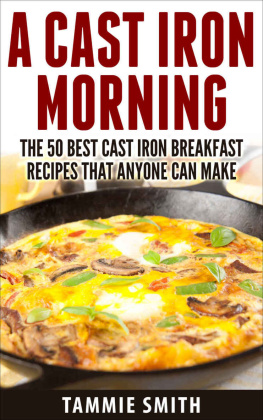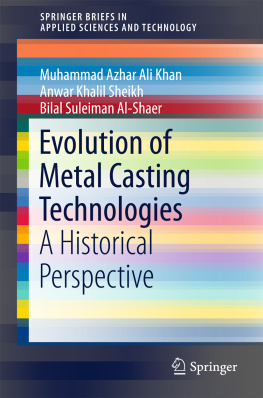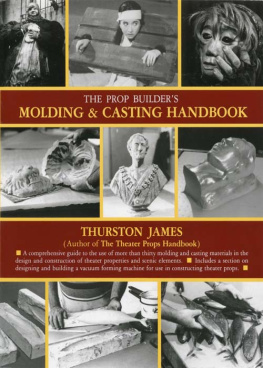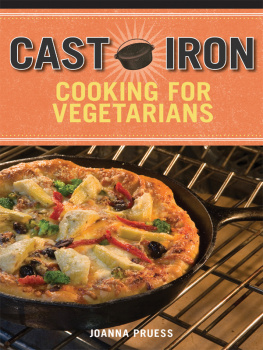Editorial notes and editing copyright 2011 by Skyhorse Publishing, Inc.
All Rights Reserved. No part of this book may be reproduced in any manner without the express written consent of the publisher, except in the case of brief excerpts in critical reviews or articles. All inquiries should be addressed to Skyhorse Publishing, 307 West 36th Street, 11th Floor, New York, NY 10018.
Skyhorse Publishing books may be purchased in bulk at special discounts for sales promotion, corporate gifts, fund-raising, or educational purposes. Special editions can also be created to specifications. For details, contact the Special Sales Department, Skyhorse Publishing, 307 West 36th Street, 11th Floor, New York, NY 10018 or info@skyhorsepublishing.com.
Skyhorse and Skyhorse Publishing are registered trademarks of Skyhorse Publishing, Inc., a Delaware corporation.
Bolland, Simpson.
[Iron founder supplement]
The art of casting in iron: how to make appliances, chains, and statues and repair broken castings the old-fashioned way / Simpson Bolland.
p. cm.
Originally published: The iron founder supplement. New York: J. Wiley & Sons, 1893.
ISBN 978-1-61608-183-6 (pbk.: alk. paper)
1. Iron founding. I. Title. II. Title: How to make appliances, chains, and statues and repair broken castings the old-fashioned way.
TS230.B69 Suppl. 2011
672.2--dc22
INTRODUCTION.
THIS book is intended by the author to complete the work begun in The Iron Founder, for which reason it is called a Supplement to the former. Whilst The Iron Founderas stated in the preface to said bookmay in all respects be considered a moulder's book, for the reason that the subjects treated are directly in line with the manipulations called forth in the actual daily practice of the moulder, the Supplement embraces every other subject concomitant with such practice, all of which it is essential that every moulder should possess some knowledge of, even if he does not aspire to the dignity of an expert in the whole art of moulding.
The author realizes the difficulty of presenting these somewhat dry and matter-of-fact subjects in a manner calculated to command the attention of such as are not directly interested in foundry affairs, and his daily experience in the foundry has convinced him that very few of the rank and file, even amongst moulders them selves, care to peruse the apparently tiresome pages of a book devoted exclusively to matters with which they are brought into daily contact. It has been his aim, therefore, to treat the various subjects in a manner somewhat different to the methods usually adopted for the ordinary text-book, and by this means excite a healthy desire, if possible, for a more extended knowledge of what is herein attempted to be explained. At the game time care has been taken to avoid the introduction of anything that would in any sense detract from its worth as an elementary treatise on such phases of the moulder's art as are duly shown forth in the table of contents.
The all-important subject of Mixing Cast Iron is discussed in these pages from a somewhat different stand-point to that usually taken. Foundry equipment and appliances receive special notice in detail, including a table of dimensions for ladles, and the latest application of machinery for moulding as well as other purposes in the foundry. Melting in Cupolas and Reverberatory Furnaces occupies a prominent place in the book; and the original table of instructions for the management of cupolas will no doubt be appreciated by all who, for lack of time or a disinclination to ponder these subjects, are not in possession of such data.
The founding of Chilled Car-wheels is folly explained and suitably illustrated, as also is the production of Malleable-iron Castings, etc.
The measurement of castings necessarily introduces some arithmetic, but knowing the antipathy usually manifested by those who unfortunately know little of these matters, the author has shorn it of all mystification and, by a few practical illustrations, endeavored to make it sufficiently plain to be understood by any one who will make the effort, no matter how deficient his previous education may have been.
Of late years the modeler and sculptor have been gradually establishing themselves as a part of our foundry system, and not a few of our modern structures are being supplied, internally and externally, with some elegant examples of art work in cast iron, which have been produced at foundries heretofore engaged only on the ruder castings for construction. This has brought us into close contact with a branch of the art hitherto considered exclusive, and entirely beyond the ordinary moulder's ability to produce; but the author knows, from personal experience, that all such exclusiveness is fast disappearing, and, owing to the numerous inquiries he has received from many quarters asking for information upon these subjects, has deemed it wise to insert in these pages an account of the methods generally pursued in the art of Statue Founding as well as Pattern Modelling,in clay and wax, and Taking Casts,all of which are kindred subjects, a want of the knowledge of which has a depreciative effect on the moulders of the present day.
SIMPSON BOLLAND
NEW YORK, November, 1983.
CONTENTS
THE IRON-FOUNDER SUPPLEMENT
EVOLUTION OF THE IRON-FOUNDER'S ART.
THE term founding is applied by many persons to all processes connected with the manufacture of articles in metal, whether the finished product has been forged from the malleable metal or cast in moulds. This generalization is entirely misleading, and it has made all the more difficult the work of placing the origin of iron-founding as an art. Iron-founding, in its proper sense, is the art of preparing moulds from plastic materials of such a nature as will successfully resist the intense heat of the molten iron,as loam or sand,in which may be formed the object to be produced in iron, the process being completed when the iron has been melted, run into the mould, and permitted to solidify.
Of the antiquity of working in brass and iron, as well as the more precious metals, there is abundant evidence, including mentions of the subject in the earliest books of the Bible. That the iron of the Hebrew records was not cast iron is made to appear with much significance in Isaiah xlviii. 4 (supposed to be about 700 B.C.): Because I know thou art obstinate, and thy neck is an iron sinew, the latter word being a plain indication of the quality of toughness common to iron in a malleable condition. Further evidence in support of this hypothesis is found in Psalms cvii. 16: For He hath broken the gates of brass and cut the bars of iron asunder. A marked distinction is here observed in the methods of spoliation: if the iron had not been malleable, there would have been no necessity for the cutting. Some knowledge of smelting iron must have been known to the ancients; otherwise neither Tubal-Cain nor his Hebrew successors could have accomplished the forged-iron work with which they are credited.
An ancient method of smelting, still employed by the natives of India, is very simple and effective, probably the same as that used by the Israelites during their term of bondage in Egypt. On the whole, it is probable that, while malleable iron was in common use among the ancients, they were practically unacquainted with cast iron and its uses; and it is more than probable that the mention of iron sculpture by the Greek writers referred to objects which had been beaten out by hammering, and not cast in moulds, as was the case, undoubtedly, in their bronze work, the antiquity of the art of casting in bronze and the precious metals being well established. The processes employed were probably similar to the

